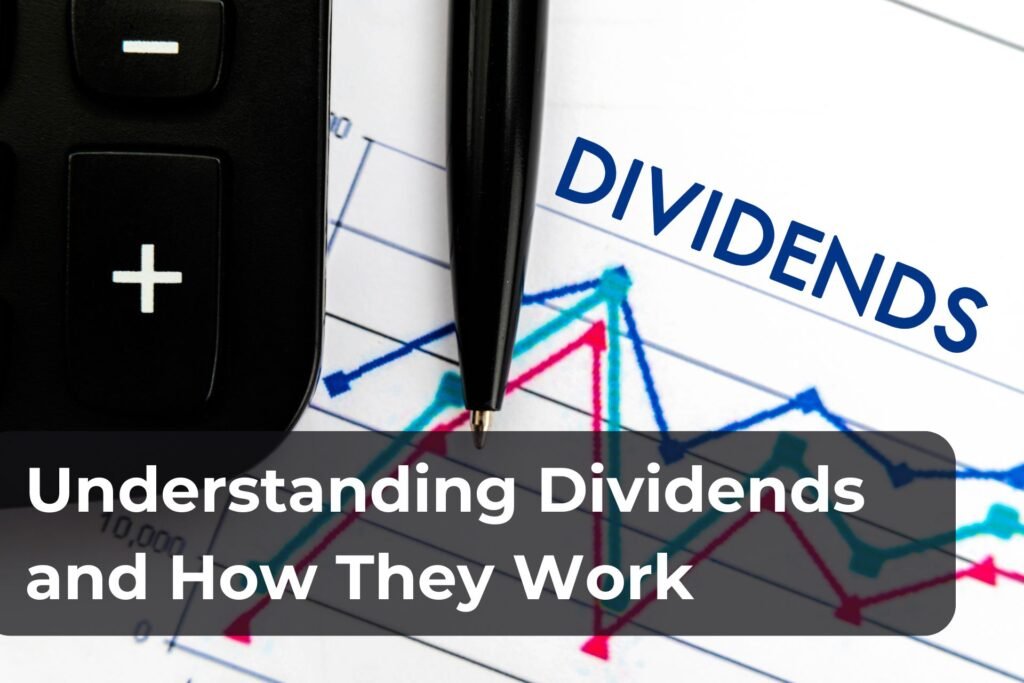Dividends represent one of the most enticing aspects of investing, especially for those looking to earn regular income from their investment portfolios or to reinvest and compound their earnings. This guide delves into the world of dividends, elucidating their nature, how they function, and their significance for investors.
What Are Dividends?
Dividends are a portion of a company’s earnings distributed to shareholders, typically in cash or additional shares. They’re a way for companies to return value to their shareholders, essentially sharing a slice of their profit pie. Not all companies pay dividends, often depending on their stage of growth. Mature, profit-generating companies are more likely to distribute dividends, while startups and high-growth companies might reinvest all earnings back into the business to fuel further growth.
How Do Dividends Work?
Declaration Date: The company’s board of directors announces a dividend payment, specifying the dividend size, record date, and payment date.
Record Date: The company prepares a list of all shareholders eligible to receive the dividend. To be on this list, you must own the stock before the record date.
Ex-Dividend Date: To receive the declared dividend, investors must purchase the stock before the ex-dividend date, which is usually one business day before the record date. If you buy the stock on or after the ex-dividend date, the dividend will go to the seller.
Payment Date: The date on which dividends are actually paid out to eligible shareholders.
Types of Dividends
Cash Dividends: The most common form, paid directly to shareholders’ bank accounts.
Stock Dividends: Additional shares are distributed to shareholders, proportional to their existing holdings.
Special Dividends: One-time payments made by companies, usually after exceptionally profitable periods or after the sale of a business unit.
The Importance of Dividends for Investors
Income Generation: Dividends provide a stream of income, which can be particularly appealing for retirees or those seeking consistent returns on their investments.
Reinvestment: Many investors choose to reinvest their dividends to purchase additional shares, leveraging the power of compounding over time.
Indication of Company Health: Regular, increasing dividend payments can be a sign of a company’s financial health and stability, making it an attractive investment.
Tax Advantages: In some jurisdictions, dividends are taxed at a lower rate than other forms of income, offering tax efficiency to investors.
Dividend Yield and Dividend Payout Ratio
Dividend Yield: A financial ratio that shows how much a company pays out in dividends each year relative to its stock price. It’s a measure to compare the attractiveness of different dividend-paying stocks.
Dividend Payout Ratio: This ratio indicates the percentage of earnings a company pays to shareholders in dividends. It helps assess the sustainability of a company’s dividend policy.
Risks and Considerations
While dividends can be an appealing aspect of investment, they’re not without risks. Companies can cut or eliminate dividends if they face financial difficulties, impacting income-focused investors. Moreover, a high dividend payout ratio might indicate that the company is not reinvesting enough in future growth.
Strategies for Dividend Investing
Diversification:
Invest in a mix of dividend-paying stocks across various sectors to mitigate risk.
DRIPs:
Consider enrolling in Dividend Reinvestment Plans (DRIPs) if you’re interested in compounding your investments over time.
Quality over Yield:
Opt for companies with a history of stable and growing dividends rather than being swayed by high yields alone, which could be unsustainable.
Understanding dividends and how they work is crucial for both seasoned investors and those new to the investment world. Dividends not only offer a potential source of regular income but also serve as a marker of corporate health and investor confidence. By incorporating dividend-paying stocks into your investment strategy, while also being mindful of the associated risks, you can work towards building a more resilient and potentially lucrative investment portfolio.
